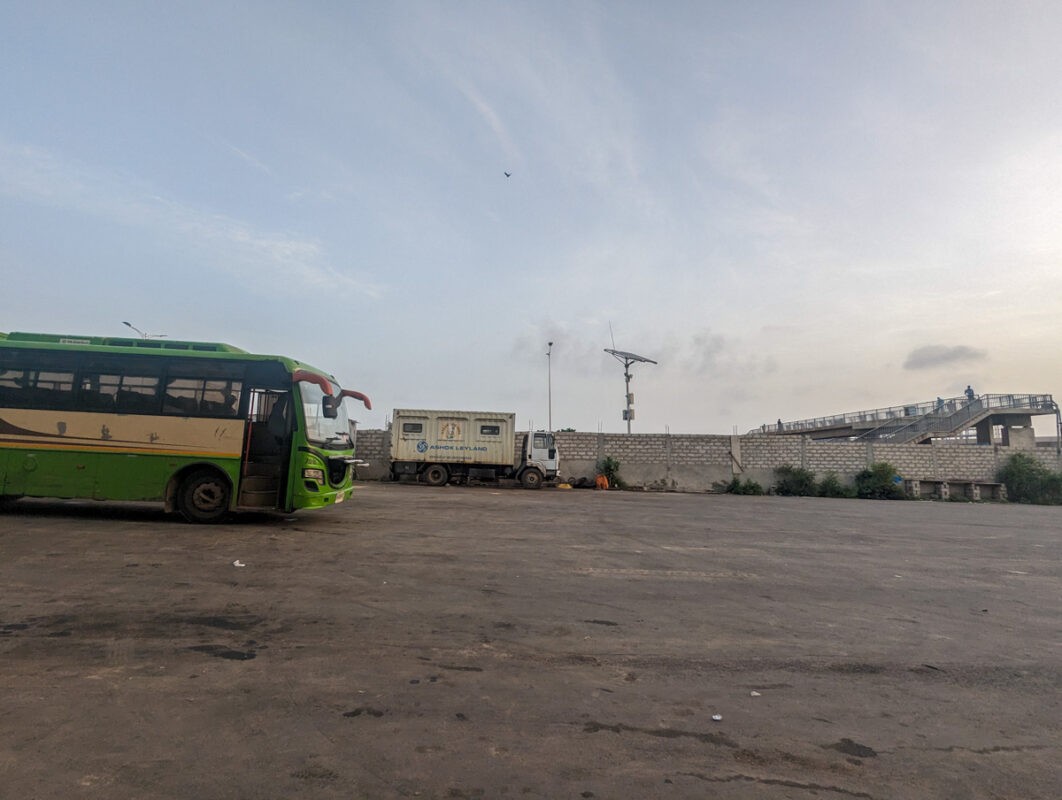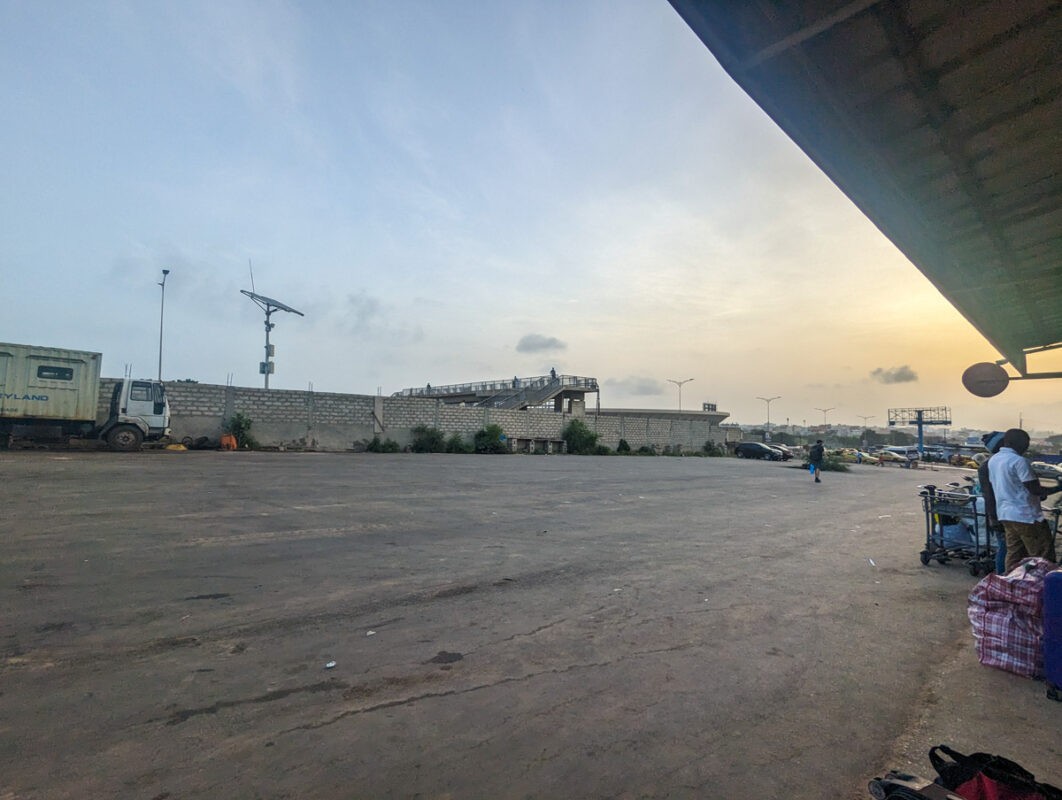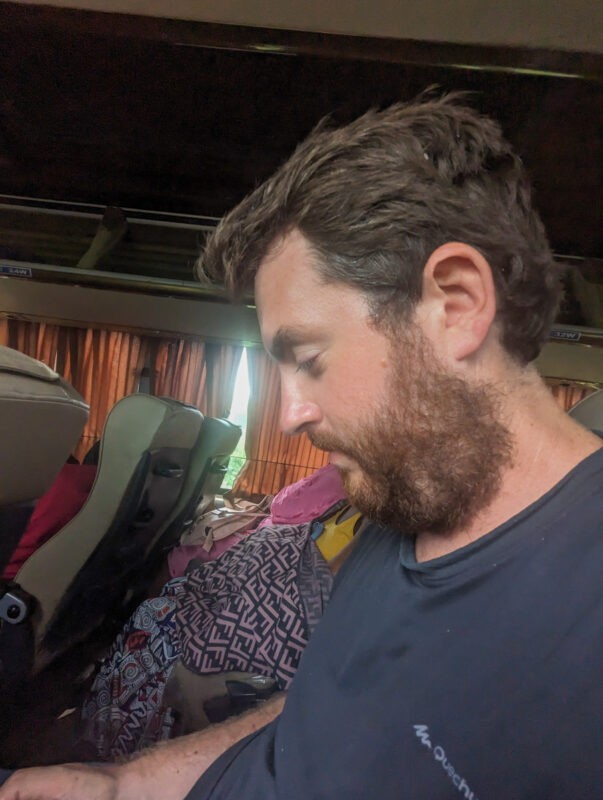Wondering how to take buses in Senegal? Here’s my full explainer!
The vivacious country of Senegal is just starting to come on the scene as an African destination that’s well worth your time.
Senegal is in the heart of West Africa and is slowly gaining recognition for its national parks, epic coastline and lush deltas.
While Senegal is one of the most visited countries in the region, its tourist industry is still small compared to lots of other global destinations (far fewer tourists visit West Africa than South East Asia, for example).
This means that getting around the country isn’t the easiest – but it’s certainly possible!
You can self-drive or hire a driver; but both these options are very expensive, and personally, I wouldn’t want to drive around Senegal.
In terms of public transport, minibuses and sept-places (converted cars with seven seats) used to be the main ways to get around Senegal, but nowadays there are a couple of bus companies that link main cities, including Dakar, St Louis and Kaolack.
I recently took a bus from Dakar to Kaolack, and decided to write up this full guide to help anyone else who’s visiting the country!
Note: If you are taking buses in Senegal, do factor in lots of time in case of breakdowns/ issues. Our bus was over four hours late to depart!
Bus companies in Senegal

There are two bus companies in Senegal:
- Senegal Dem Dikk runs buses in the country
- Africa Dem Dikk runs services to Banjul, Gambia
How to book buses in Senegal
Buses in Senegal typically sell out in advance, so you’ll need to book in advance. The booking procedure is a bit complicated to say the least, but we managed it!
You’ll need a Senegalese SIM card (NOT an e-sim like Airalo) with a phone number.
I got a SIM card at the Orange store, and I recommend doing so because they can set you up with Orange Money while you’re there (ask them to do this in the store). You’ll need Orange Money to buy the tickets!
Download the Orange Money application in the store so you can check with the agent that it’s working ok.
(Note: In the Orange store we went to, only French was spoken, so do come armed with a few phrases if you don’t speak the language).
Once you have your SIM card, download the Yobuma app. This is where you can book bus tickets.
Click on “tickets” and enter your departure, arrival and date. Double-check how much money you need to put in your Orange Money account before making the booking.
Now to put money in your Orange Money account!
There are little offices all around Senegal where I think you can put cash into your Orange Money account. However, due to our lack of French, we decided to do it online.
We used another app, Remitly, to send money from our UK account directly to the phone number. The first transaction for us was free.
It took around 30 minutes to an hour for the money to hit our Orange Money account.
Once you have money in your Orange account, go back onto Yobuma and reserve your seat.
Select to pay by Orange Pay and put in your phone number.
You’ll then get a text with a code, which you can input in the app.
THEN, the money should leave your Orange account and you’ll be issued your tickets!
You’ll receive an SMS ticket confirmation, although I was unable to download the full confirmation this way.
There’s also an in-app confirmation – I’d recommend screenshotting this as on the day of the bus journey, my Yobuma app wasn’t loading.
Hopefully that all makes sense! It’s a process, but does mean you can secure your tickets ahead of time!
Side note: The Orange Money app is useful to have because if you run out of cash, you can often use it to pay for things in Senegal. We used it on our last day in Senegal to pay for a boat tour. Most Senegalese people use it.
Where to take buses in Senegal

Look at your ticket for your bus station.
Do be aware that some buses may depart from different stations; ours left from a different one in Dakar than the norm, so always refer to your ticket! You can show the ticket to your taxi driver to avoid confusion.
The ticket said to arrive an hour before your bus, which seemed a bit like overkill – but do be aware that Dakar can have some serious traffic – so I’d recommend leaving plenty of time to reach the bus station!
We used the Yango app to get around Dakar, which worked well apart from when we had to go to the bus station – luckily we had lots of time and managed to secure a taxi with someone from outside our hotel!
Arriving (and waiting) at the bus station
I’d recommend making sure that you’re in the right place when you arrive – look for somebody wearing a shirt or high-vis with the bus company’s logo or someone behind a kiosk.
Knowing some French in Senegal helps a lot. I’m trying to re-learn the language (it was my favourite subject at school but I’d all but forgotten it until last year!) and we managed to get by on my basic French and a few words of English that the bus employees knew.
We confirmed that we needed to wait there, and had about 50 minutes until our bus departs.
Eight o clock came… and went. At 8:20 am, we enquired again, and were told “it’s coming”.
At 9:00 am, we asked again, and we’re told it’s broken down. “It’ll be here at maybe 10:30am or 11:00 am”.
At 11:00 am, we were told it would be one or two hours more.
It ended up rolling into the bus station at around 12:30 pm – four hours and 30 minutes after its scheduled departure.
Of course, your experience might be completely different, but as far as I’m aware, this isn’t uncommon in Senegal – public transport journeys can often take hours longer due to significant waiting times!
Boarding the bus

About 20 minutes before the bus arrived, somebody came around to check tickets and tape on luggage tags. Like always, I’d recommend keeping your belongings safe by placing them into your hand luggage bags.
We all got up, excited, only for the bus not to appear for another little while!
I did notice some people having their bags weighed. On the tickets, it said that it cost 300 XOF extra per kilo over 15kg.
We both probably had about 20kg each total, but split between a large backpack and carry on bag each, but weren’t asked to weigh our bags.
What was the bus like?

The bus was a standard coach in a 2-2 configuration.
There was AC, which – while it wasn’t the strongest – kept us cool for the bus ride.
There was a pocket on the back of each seat for phones/ powerbanks etc.
When you book Dem Dikk buses, you’re assigned a seat number and everyone seemed to stay to that assigned seat.
This means that there’s no overcrowding on these buses; everyone gets a seat (this contrasts with the minivans in Senegal, which are rammed full of people, some even hitching a ride on the back!).
The only unusual thing I found on this bus was that every seat was wrapped in see-through plastic. My plastic in particular was quite dirty, and I noticed some people removing theirs so I did the same.
Arriving and disembarking the bus
These types of buses in Senegal have set stops.
As you disembark, there will likely be taxi drivers able to take you to your next destination!
Make sure you agree on a rate before you get in the taxi.
See my video for more information about our time on Senegal buses!
Need to get somewhere else?
Not all places in Senegal are connected by bus.
If you need to get to smaller cities or towns, see my guide to sept-places, which connect most of the country.
And take a look at my Senegal posts for more information!
